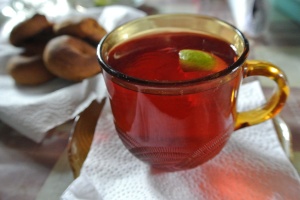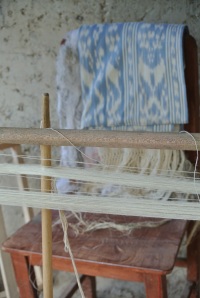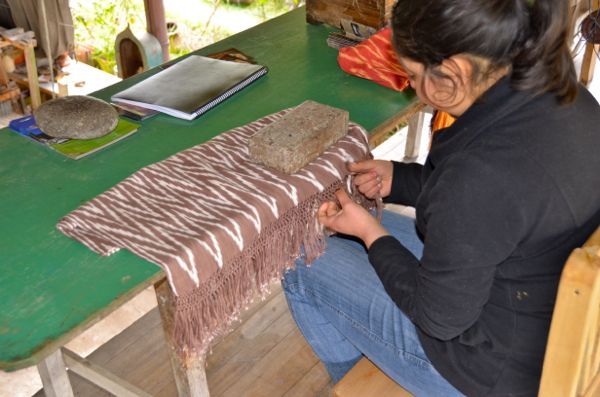 Ecuador is an endlessly fascinating country – though small, it has an amazing diversity that belies its size. From the Galapagos Islands and the Amazon rainforest; from the mountains and then down to the beach; from the large metropolitan cities of Quito and Guayaquil to colonial towns like Cuenca and Loja – Ecuador seems to have it all.
Ecuador is an endlessly fascinating country – though small, it has an amazing diversity that belies its size. From the Galapagos Islands and the Amazon rainforest; from the mountains and then down to the beach; from the large metropolitan cities of Quito and Guayaquil to colonial towns like Cuenca and Loja – Ecuador seems to have it all.
There is also a large mix of people, including numerous indigenous tribes who either still live the way they have for many centuries in the rainforest or rural villages; or have migrated into cities where they have made their lives.
While in Cuenca, I had the opportunity to take a Viator excursion to several surrounding towns, visiting small artisan workshops along the way. These folks are from multi-generations in their families who have worked on their craft, and some may be the last of a dying breed.
 First we stopped in San Bartolomé, at the house of Señora Selmira, for tea and pastries. Sra. Selmira has lived in the home all her life, and she raises both chickens and cuy (guinea pigs, a dining delicacy and specialty of Ecuador). She also has a wonderful garden, where she grows fruits and vegetables but also many plants for medicinal purposes and to make teas. Sra. Selmira selected a flower from her garden and made tea for us, accompanied by small donut pastries.
First we stopped in San Bartolomé, at the house of Señora Selmira, for tea and pastries. Sra. Selmira has lived in the home all her life, and she raises both chickens and cuy (guinea pigs, a dining delicacy and specialty of Ecuador). She also has a wonderful garden, where she grows fruits and vegetables but also many plants for medicinal purposes and to make teas. Sra. Selmira selected a flower from her garden and made tea for us, accompanied by small donut pastries.
From there we visited the workshop of a craftsman for which San Bartolomé is famous: guitar makers. The city is renowned for its master guitar makers, who make the instruments by hand. We visited Guitarras Uyaguari, where Homero Uyaguari has been hand-crafting guitars of all sizes, shapes and designs for more than 40 years.
 Uyaguari’s father and grandfather before him were also guitar makers, and Uyaguari has 10 sons – all of whom work with him in the art. Everything except the strings and the frets are made by hand. The intricate designs that Uyaguari crafts on his guitars are made by painstakingly dying thin strips of wood, gluing them together into patterns, and then cutting the resulting strips into tiny wooden pellets that are put together to form the design. It takes 21 days in total to make one standard-size guitar from start to finish, and Uyaguari’s masterpieces sell anywhere from $70 to $1,000.
Uyaguari’s father and grandfather before him were also guitar makers, and Uyaguari has 10 sons – all of whom work with him in the art. Everything except the strings and the frets are made by hand. The intricate designs that Uyaguari crafts on his guitars are made by painstakingly dying thin strips of wood, gluing them together into patterns, and then cutting the resulting strips into tiny wooden pellets that are put together to form the design. It takes 21 days in total to make one standard-size guitar from start to finish, and Uyaguari’s masterpieces sell anywhere from $70 to $1,000.

From there, we visited the workshop of Fernando and Rosa Loja, who have been making ceramica en miniaturas for 20 years. Using clay, the Lojas hand-sculpt the tiny figurines into a variety of Ecuadorian life, from musicians to dancers and people doing everyday things such as cooking or playing. Between the two of them, the couple can make 100 miniatures in a day, and sell them in stores around central Ecuador.
 On to Chordeleg, known for its jewelry – especially fine silver filigree jewelry. Here, Eloy Peláez and his sons, Wilson and Jorge, have been making jewelry for decades. Jorge, who is a professor of drawing in the arts department at the local university, creates most of the designs for the Peláez jewelry.
On to Chordeleg, known for its jewelry – especially fine silver filigree jewelry. Here, Eloy Peláez and his sons, Wilson and Jorge, have been making jewelry for decades. Jorge, who is a professor of drawing in the arts department at the local university, creates most of the designs for the Peláez jewelry.
 Each piece is hand-crafted, beginning with the fine silver pieces which are melted down and then spun into very fine threads of silver. Using those threads, of varying widths, the Peláez family creates rings, pins, earrings, necklaces and even tiaras, weaving fine filigree designs into each piece.
Each piece is hand-crafted, beginning with the fine silver pieces which are melted down and then spun into very fine threads of silver. Using those threads, of varying widths, the Peláez family creates rings, pins, earrings, necklaces and even tiaras, weaving fine filigree designs into each piece.
The dragonfly pin on the right shows the original hand-drawn design and the finished product, which took one full day-plus to make (the second day for polishing).
 The last stop was the weaving workshop of the Jimenez family. Jose Jimenez learned the art of weaving from his father, grandfather and grandmother. Now, his children work with him to carry on the craft, creating shawls, scarves and other items. Every single part of the process is done by hand, from the spinning of the cotton and silks into thread for weaving, and then dying each portion using various natural ingredients to create different colors, from indigo to nuts, plants and charcoal. The colored threads are then woven on an old-fashioned, wooden hand loom and each design is completely done as the weaving is done, by memory and creation. Fine “lace” looking work at the end of the shawls is done by hand, using the “fingernail technique.” One shawl takes about 40 hours to make.
The last stop was the weaving workshop of the Jimenez family. Jose Jimenez learned the art of weaving from his father, grandfather and grandmother. Now, his children work with him to carry on the craft, creating shawls, scarves and other items. Every single part of the process is done by hand, from the spinning of the cotton and silks into thread for weaving, and then dying each portion using various natural ingredients to create different colors, from indigo to nuts, plants and charcoal. The colored threads are then woven on an old-fashioned, wooden hand loom and each design is completely done as the weaving is done, by memory and creation. Fine “lace” looking work at the end of the shawls is done by hand, using the “fingernail technique.” One shawl takes about 40 hours to make.
In fact, the Jimenez family is the last family in this area to retain this craft, the last family to still be doing what seems to be a dying art. The government subsidizes the workshop and invests to keep this tradition going, so perhaps it will not be a lost art.

The items that are produced from the Jimenez family are of such high quality, and so sought after, that Salma Hayek visited the workshop and the Jimenez shawls were used in the movie, Frida, about the renowned Mexican artist Frida Kahlo.

Jose’s son Ismael works the loom to weave a handcrafted shawl.











